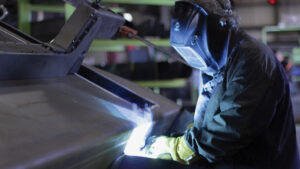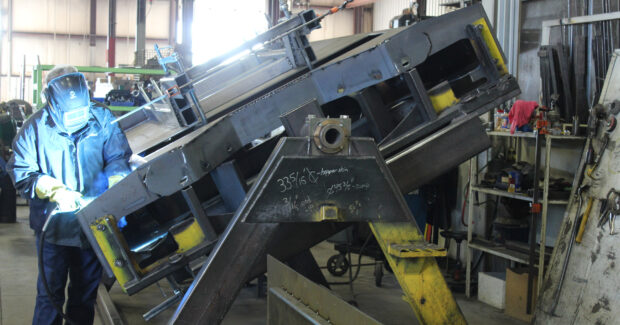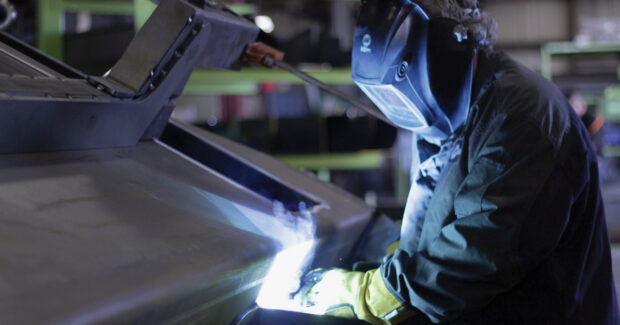Common Causes of Weld Rework and How to Avoid Them
Tackle common causes of rework by tapping into welding solutions and technologies designed to help less experienced welders.
Posted: June 14, 2023

WELDING TIPS
Poor welds and rework in the weld cell can drive up your operation’s costs significantly. Rework essentially means you’re paying for something twice — making it an important issue to address for any manufacturing or fabrication shop.
There are several common causes of rework.
Poor weld appearance
A visually bad weld — whether it be a ropey bead, undercut, lack of fusion, or a bead that’s inconsistently sized — can result in a failed inspection. Poor weld appearance can stem from several causes:
- Cold puddle: Beware of a weld puddle that’s too cold. The puddle must be hot enough to achieve good fusion and produce a good bead profile.
- Improper travel speed: Using a travel speed that’s too fast and getting too far ahead of the puddle will cause a strung-out puddle that doesn’t flow at the toes.
- Incorrect work angle, travel angle or electrode stickout: Proper technique is key to producing good weld beads. The work angle should be approximately 45°. Contact-tip-to-work distance should be about 3/4” when running a pulsed or spray transfer process and about 3/8” when running a short-circuit transfer process. In addition, a 10° to 15° travel angle is recommended with a push travel method when using pulsed or spray transfer modes. If you’re using short-circuit transfer mode, either a drag or push angle is fine.
 Issues with poor weld appearance can be addressed in several ways. First, proper training is key, especially with less experienced welders. You can also adjust welding parameters as needed to produce a better-looking weld. Proper wire feed speed depends on material thickness. Use a faster wire feed speed with thicker materials; this may require an increase in voltage. Lastly, shielding gas also plays an important role in weld appearance. The right shielding gas for the job depends on material type and thickness and the type of arc transfer desired. A good gas option for pulsed and spray transfer modes is a blend of 90% argon and 10% carbon dioxide. For short-circuit MIG, a good option is a mix of 75% argon and 25% carbon dioxide. Synergic welding systems can help with gas selection by recommending gasses to produce the best arc characteristics for the program being used.
Issues with poor weld appearance can be addressed in several ways. First, proper training is key, especially with less experienced welders. You can also adjust welding parameters as needed to produce a better-looking weld. Proper wire feed speed depends on material thickness. Use a faster wire feed speed with thicker materials; this may require an increase in voltage. Lastly, shielding gas also plays an important role in weld appearance. The right shielding gas for the job depends on material type and thickness and the type of arc transfer desired. A good gas option for pulsed and spray transfer modes is a blend of 90% argon and 10% carbon dioxide. For short-circuit MIG, a good option is a mix of 75% argon and 25% carbon dioxide. Synergic welding systems can help with gas selection by recommending gasses to produce the best arc characteristics for the program being used.
1. Lack of root fusion
Too-cold weld parameters or incorrect parameters settings are often the cause of a lack of root fusion. Be sure to use the correct settings and add enough heat into the puddle.
Reading the puddle properly also plays a role in getting the necessary weld fusion and penetration. Less experienced welders may tend to go too slow, which causes the arc to get back into the puddle and increases the risk of improper penetration or lack of fusion. In response, operators may rush to get ahead of the puddle again but end up going too fast, getting too far ahead of the puddle.
To get the best fusion and base metal penetration, keep the arc at the leading edge of the puddle and keep a tear-drop shaped puddle with proper travel speeds.
2. Excessive weld spatter
Too much spatter is a problem that can add a lot of time in post-weld cleaning. The transfer mode used plays a big role in how much spatter is produced during welding. For example, you may use a short-circuit transfer mode when welding out of position or on very thin metals. However, this mode produces much more spatter than other transfers. It can also limit puddle fluidity and cause lack of fusion on thicker materials. Switch to a pulsed MIG process, which produces a flatter, more fluid bead and greatly reduces spatter levels.
If you’re experiencing excessive spatter, also check to ensure you’re using proper parameters and the right shielding gas.
3. Missed welds
If your manufacturing or fabrication operation has large weldments with numerous welds, missing a weld in the sequence can be very costly. After the part leaves the welding booth, it may go on to assembly, the paint booth or even farther along in the process. When the missed weld is discovered, all previous steps must be repeated — making it more costly the further along in the process it is.
To solve the problem of missed welds, consider a monitoring system such as Insight Centerpoint™ from Miller, a real-time welder feedback solution that provides arc data monitoring, guidance and control in the weld cell. Operators are alerted if a weld is missed or is outside of acceptable parameters.
4. Burn-through and scrapped parts
When there is improper part fit-up or gaps that are too large between the parts being welded, it can result in burn-through. This is because operators may try to fill uneven or large gaps by turning up the heat or using too much filler metal.
A switch to pulsed MIG can provide benefits in this situation. Pulsed MIG provides good gap-filling abilities while reducing heat input, so it’s easier for operators to overcome uneven part fit-up by adjusting their technique. Synergic control on wire feeders can also help when part fit-up is not consistent. You can simply turn down the wire feed speed and it will cool down the puddle.
5. Wire feeding issues
Problems with wire feeding can cause undercut, lack of penetration, insufficient weld toe fusion or poor weld profiles — all of which can result in rework. Common sources of wire feeding issues include incorrectly sized or trimmed liners, improperly installed liners, liners clogged with dirt and debris, an incorrectly sized contact tip, the wrong drive rolls, or improper pressure on the drive rolls. Be sure to use contact tips that are the correct size for the wire and cut liners to the proper length. If you’re experiencing wire feeding issues, check the wire spool or drum for tangles. Also be sure to check the liner and drive roll pressure.
Reducing Rework
If excessive rework is an issue in your operation, taking the time to find the source of the problem can save significant time and money. Follow these best practices to tackle common causes of rework and take advantage of welding solutions and technologies designed to help less experienced welders.
Subscribe to learn the latest in manufacturing.


















